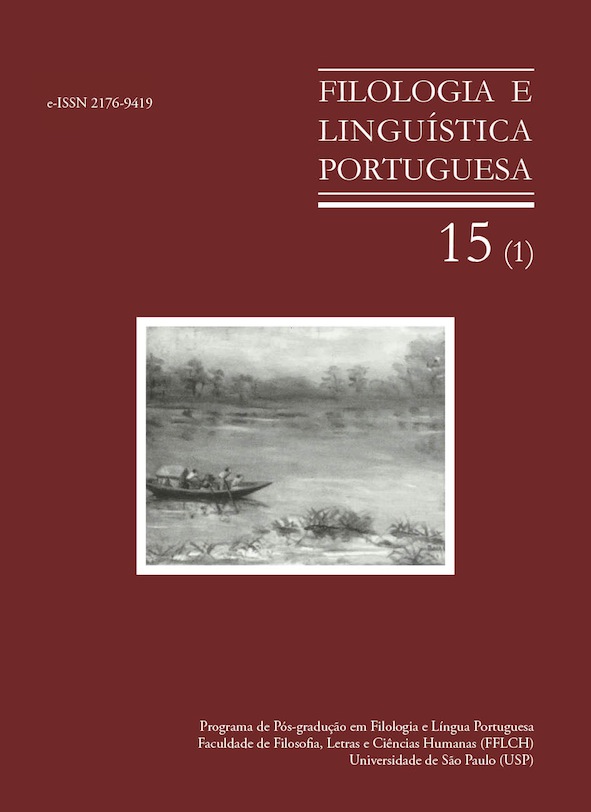O continuum de não-atribuição de causalidade na Crônica Geral de Espanha de 1344
DOI:
https://doi.org/10.11606/issn.2176-9419.v15i1p155-178Palavras-chave:
Passiva, média, impessoal, causalidadeResumo
Este trabalho analisa, num enfoque cognitivofuncional, as construções passivas, médias e impessoais no português arcaico, com o fim de demonstrar que fazem parte de um continuum de causalidade. Considera que o traço comum a essas construções é a não-atribuição de causalidade, e que estas construções refletem diferentes conceitualizações de um evento. 1061 ocorrências, retiradas da Crônica Geral de Espanha de 1344, foram analisadas quanto a fatores semânticos, como a saliência cognitiva do Afetado e do Causativo, o traço [animado], a transitividade, e depois graduadas quanto ao grau de transitividade e causalidade. Os resultados apontaram que a média é a mais prototípica das construções de não-atribuição de causalidade, por ser a que apresenta causativo menos saliente e menor grau de transitividade. A passiva caracterizou-se como menos prototípica por seu Causativo ser frequentemente evocado e apresentar maior grau de transitividade. Do mesmo modo, a impessoal, cujo causativo é frequentemente inferível, manifestouse como mais causativa e mais transitiva que a média, todavia menos que a passiva.
Downloads
Downloads
Publicado
Edição
Seção
Licença
Os direitos autorais serão cedidos à revista para publicação on-line, com livre acesso e impressa para arquivo em papel. Serão preservados, porém, para autores que queiram republicar os seus trabalhos em coletâneas.





















